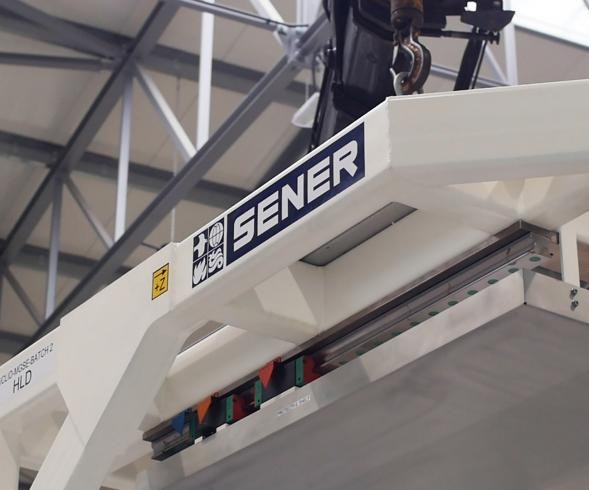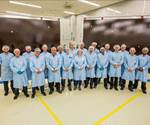Sener Aeroespacial to develop assembly, testing equipment for JUICE satellite solar array wings
The Spanish aerospace systems supplier will provide equipment for transport, functional and vibration tests and final assembly of the large solar panels.

Sener support stand from a previous space mission. Source | Sener Aeroespacial
Aerospace systems supplier Sener Aeroespacial (Madrid, Spain) announces that it will design and manufacture a set of mechanical ground support equipment for assembly and testing of solar array wings for the JUpiter ICy moons Explorer (JUICE) satellite, one of the largest missions of the European Space Agency (ESA).
JUICE is the first large mission of the ESA’s Space Vision 2015-2025 program, with the purpose of studying the atmosphere and magnetosphere of Jupiter and its moons Europe, Callisto and Ganymede. The satellite will be equipped with 97-square-meter solar panels, reportedly the largest used in a mission of this kind to date.
Sener Aeroespacial will provide equipment for transport around the facility, functional and vibration tests and final assembly of the large solar panels. The company is responsible for the design and manufacturing of a support frame (mechanism for elevation, leveling, rotation and transport of solar panels with a vibration adapter) and supervision over the manufacturing of four types of devices designed by the client, Airbus Defense and Space (Leiden, Netherlands). (Airborne (The Hague, Netherlands) is developing the substrate panels for use in the solar arrays.)
This contract is in addition to Sener Aeroespacial’s role in designing, manufacturing, testing and installing a 10-meter magnetometer boom used to place scientific instruments away from the satellite to avoid magnetic interference. Moreover, Sener Aeroespacial executes the Medium-Gain Antenna (MGAMA) that will back up the satellite’s High-Gain Antenna in order to guarantee communication between JUICE and the Earth all times. The medium-gain antenna will be also used in mission’s science experiments. Sener Aeroespacial’s work comprises the antenna reflector, the pointing mechanism and the control electronics.
The JUICE mission is scheduled to begin in mid-2022.
Related Content
-
Bladder-assisted compression molding derivative produces complex, autoclave-quality automotive parts
HP Composites’ AirPower technology enables high-rate CFRP roof production with 50% energy savings for the Maserati MC20.
-
ASCEND program completion: Transforming the U.K.'s high-rate composites manufacturing capability
GKN Aerospace, McLaren Automotive and U.K. partners chart the final chapter of the 4-year, £39.6 million ASCEND program, which accomplished significant progress in high-rate production, Industry 4.0 and sustainable composites manufacturing.
-
Troubleshooting thermoplastic composite stamp forming
Understand the basic science of TPC stamp forming, a manufacturing process steadily gaining momentum in aerospace and mobility applications thanks to its rapid forming, short cycle times and automated methods.
.jpg;width=70;height=70;mode=crop)





